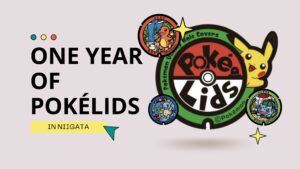
The creators of Pokémon have released a statement saying: “It seems that not all utility holes are man-made; rumor has it that Diglett may be responsible for digging large enough holes to be mistaken for utility holes and some artists took it upon themselves to “mark” the covers to differentiate them from ordinary ones.”
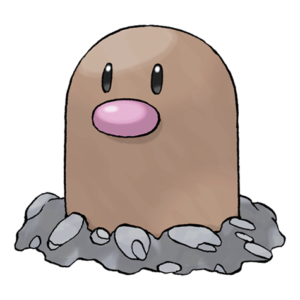
Silly Digletts
In a more…realistic… explanation, Pokémon Co., Ltd. started making manhole covers to make people all over Japan and the world aware of the charm of the regions Pokémon are inspired by.
To date, there are over 180 Pokélids in Japan in 19 different prefectures. Niigata snagged 4 Pokélids for itself last fall. On Nov 26, 2020, the new Pokélids were unveiled in a ceremony with Pikachu and the Mascot of Ojiya working together to lift the curtain.
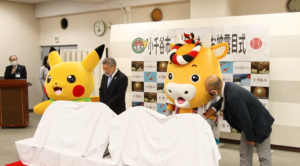
The Pokemon unveiling ceremony on Nov 26, 2020. Photo by the City of Ojiya
So what Pokémon was inspired by Niigata?
Drumroll, please!
.
.
.
.
.
.
.
.
.
.
Magikarp!
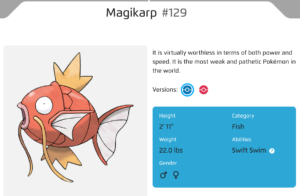
The Pokédex description of Magikarp
That’s right folks. The Pokémon that even the Pokédex itself proclaims to be “virtually worthless—the weakest and most pathetic Pokémon in the world” was inspired by our Niigata.
. . . Well, we can’t all have nice things. Though, the Pokélids are pretty cool!

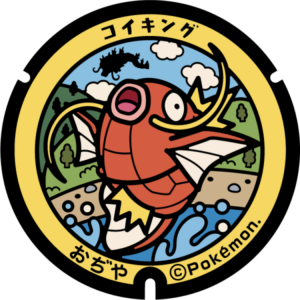
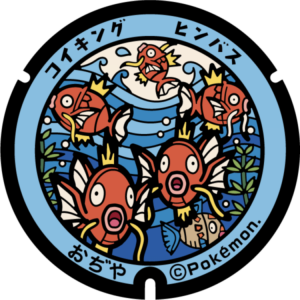
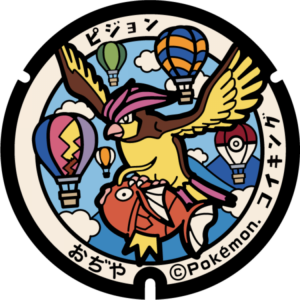
In actuality, Magikarp was inspired by Nishikigoi, more commonly known in English as Koi fish (which just means “carp” in Japanese).
Nishikigoi were originally bred in the late Edo period, in the area which is now Ojiya and Nagaoka, as a source of food. Since the snow would often isolate villages and make trade routes impassable, the carp were an important protein source.

What appears to be rice paddies are actually Nishikigoi ponds. Photo by Nippon.com
Over time, the repeated inbreeding resulted in the carp developing unique markings and colorings. Several farmers started breeding the fish for beauty rather than as a source of food. With breeders then crossbreeding their fish with those of other farms, to create the over 80 distinct varieties of Koi that we know today.
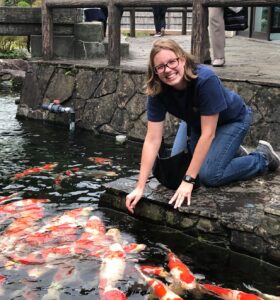
Taylor enjoys feeding the Nishikigoi at the Nishikigoi no Sato in Ojiya.
Nishikigoi didn’t become popular in the rest of Japan until after they were on display at the World Fair in Tokyo in 1914. They quickly became a symbol of wealth, with private residences boasting elaborate garden ponds filled with “Echigo’s Unique Carp”.
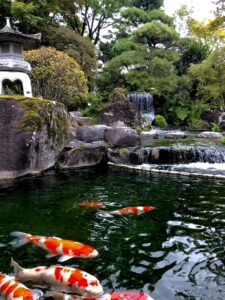
Koi fish swim gracefully in the garden at Nishikigoi no Sato.
Nishikigoi’s rise to international stardom is a more recent phenomenon. According to the Ministry of Finance’s trade statistics, Japan exported roughly ¥1 billion worth of ornamental fish a year, excluding goldfish, up until around 2000 when buyers around the globe started purchasing Koi for their gardens. By 2019, the amount had increased to ¥4.7 billion. Rinko Corp., the company responsible for freight shipment at the Niigata Airport said that Nishikigoi shipments accounted for about 90 percent of the international cargo that departed the airport in 2019. With over 300 breeders of Nishikigoi in Niigata, it is an important industry for the prefecture.
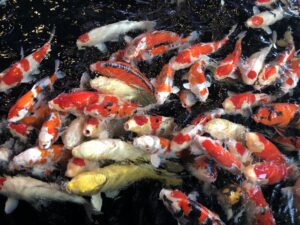
Many different varieties of Koi fish swim together looking for food at Nishikigoi no Sato
These fish do not come cheap. Often, a single Nishikigoi costs hundreds of thousands of yen and the price can sometimes go sky high. In 2018, one Nishikigoi was purchased by a Taiwanese buyer for over 200 million yen (USD 1.9 million). International Nishikigoi exports from Niigata totaled over 2.6 billion yen in 2019.
With Nishikigoi being such an important cultural icon and a staple export for the prefecture, one starts to think that maybe the Pokémon-inspired by them isn’t so worthless after all.
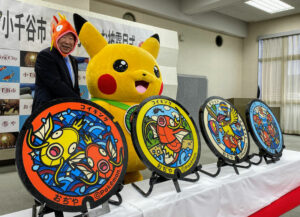
If you want to check out the Pokélids and the real-life fish that inspired Magikarp, you can find the exact GPS coordinates of all the Pokélids on the Pokémon website.

And yes, all 4 of the Ojiya Pokélids are also Pokéstops for the game Pokémon Go.
Koi Fun Facts:
- Most Nishikigoi live between 20-30 years, but some have reportedly lived over 100 years.
- In 2017 Niigata declared Nishikigoi as the official fish of the prefecture.
- In many areas of North America, koi are introduced into the artificial water hazard and ponds on golf courses to keep water-borne insect larvae under control.
- Koi have been accidentally or deliberately released into the wild in every continent except Antarctica. They quickly revert to the natural coloration of an Amur carp within a few generations. In many areas, they are considered an invasive species.
- In Japanese, “koi” is a homophone for 恋, another word that means “affection” or “love”, so koi are often considered symbols of love and friendship in Japan.
Written by: Kimberly Fitzgerald


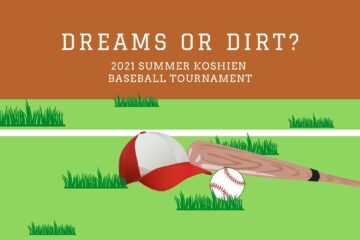
0 Comments